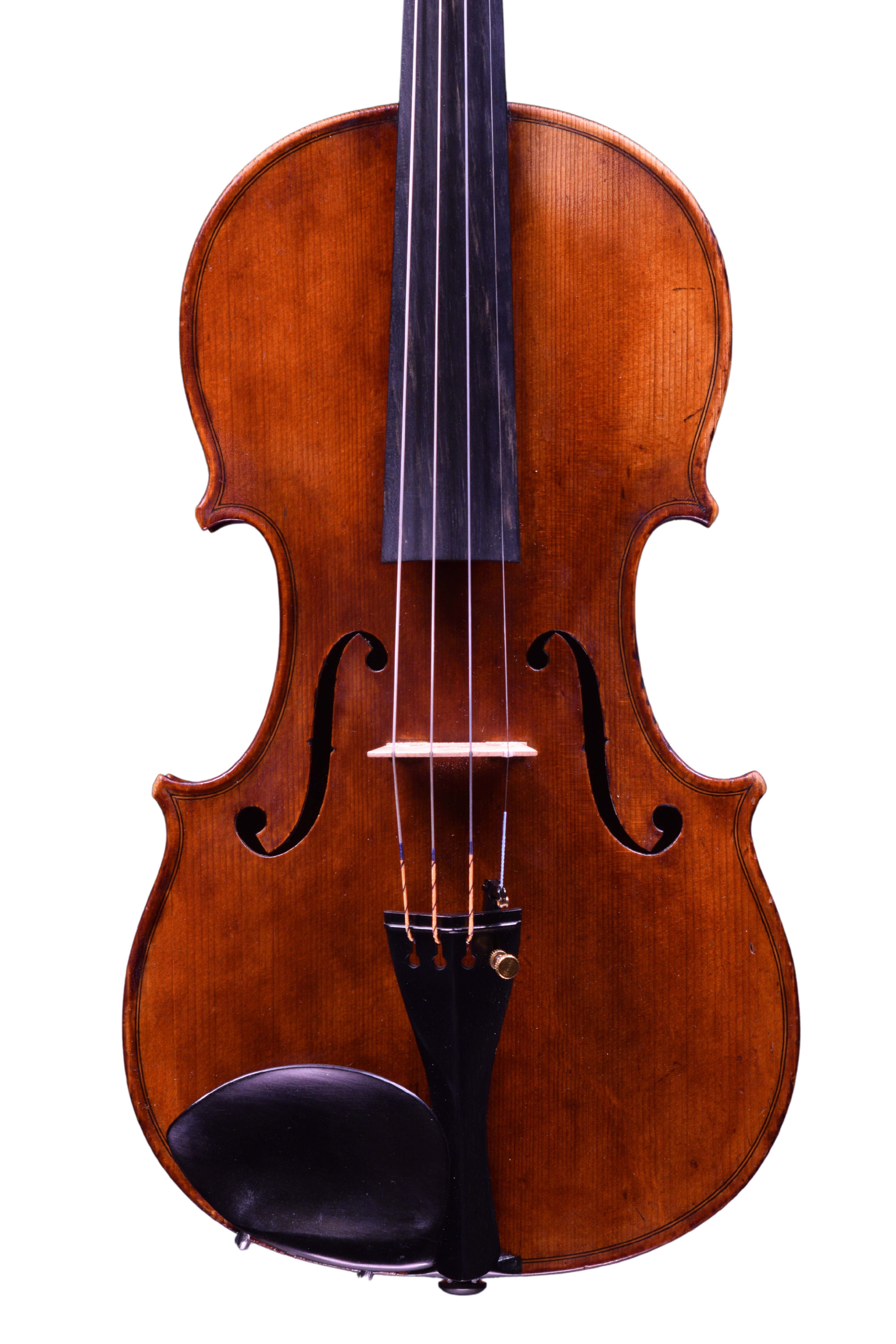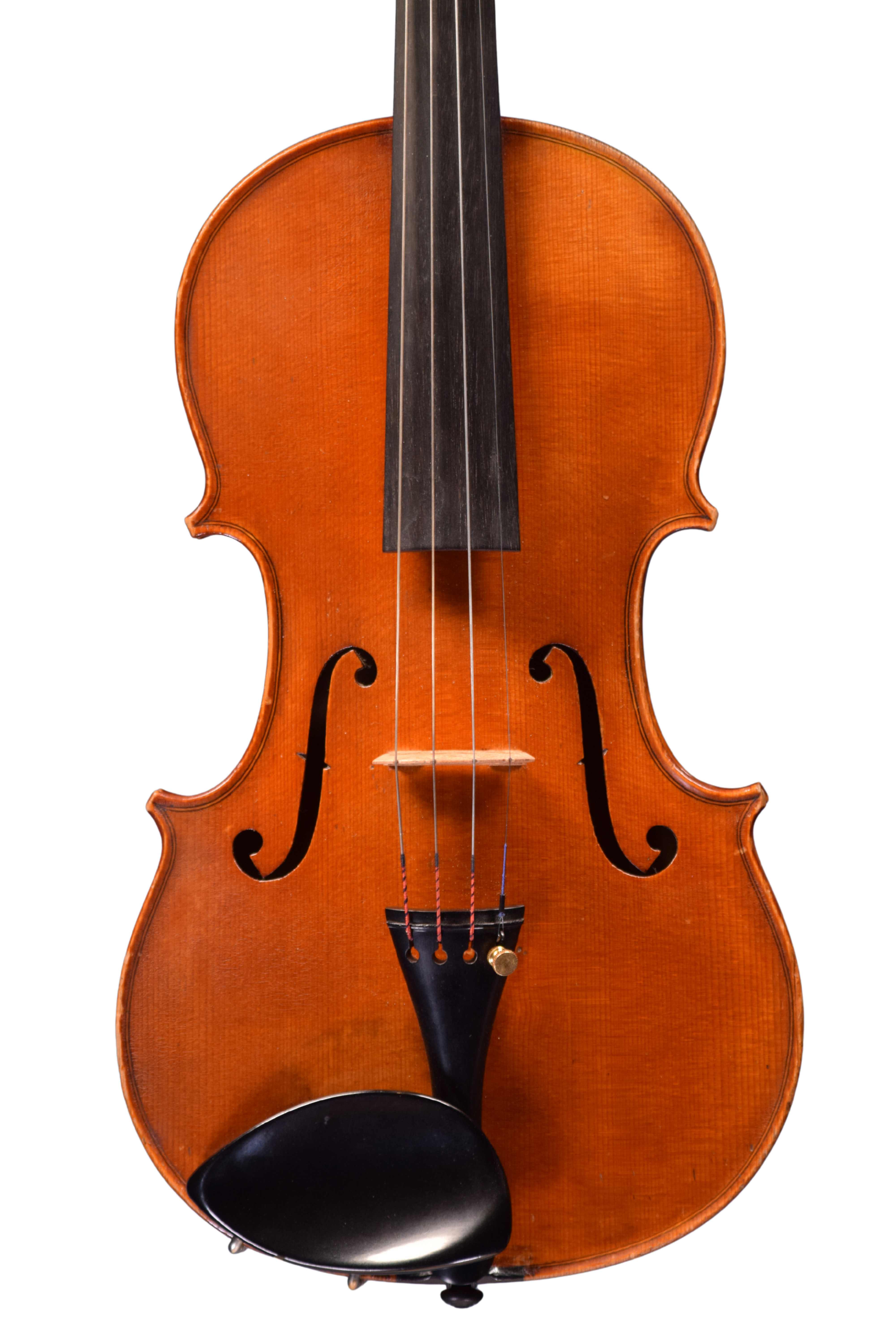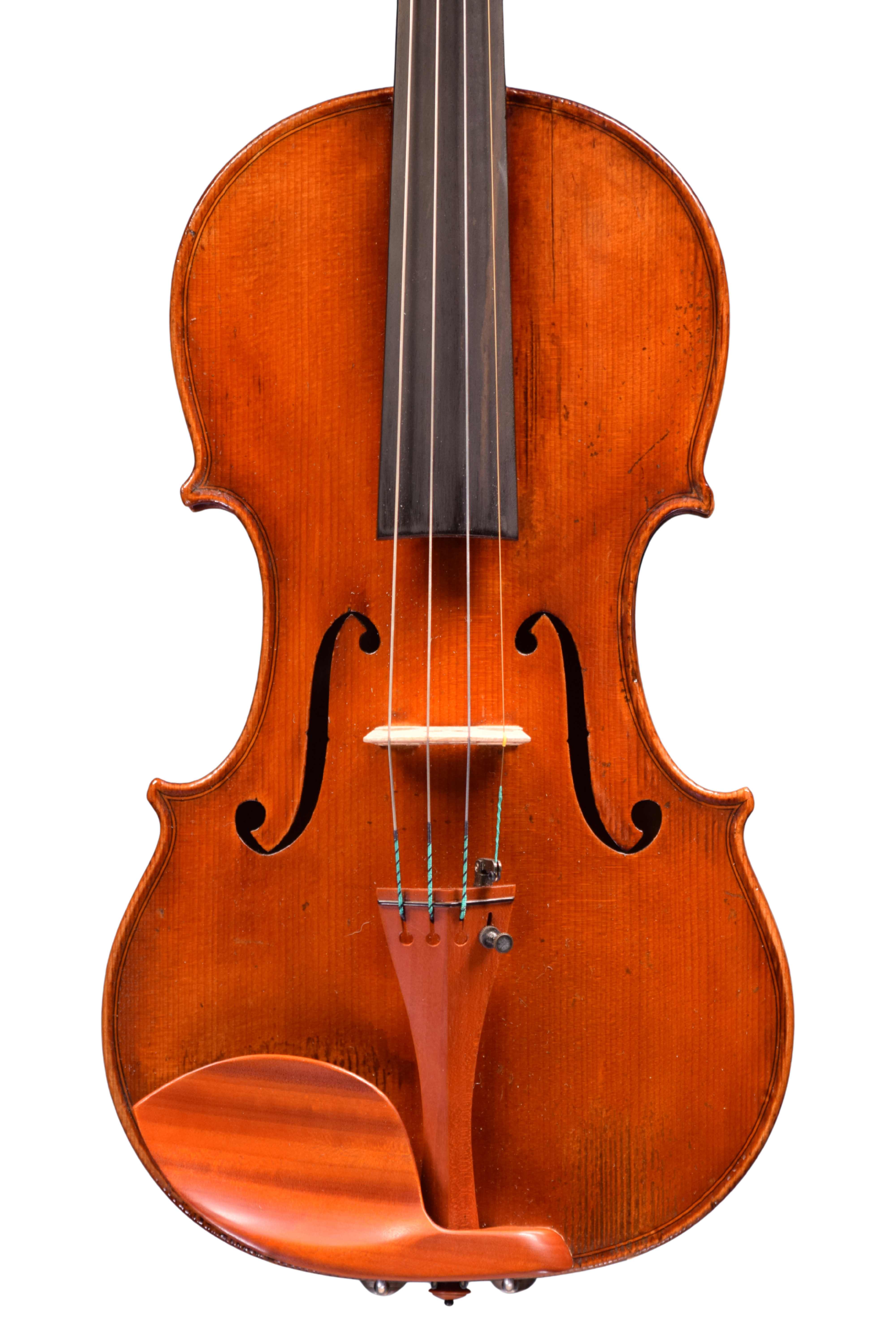Today we take a look at three violins, all made in Britain in the months before the dawn of the twentieth century. This was an interesting time in British violin making: the nineteenth century had brought enormous change to the industry, from the significant influence of European makers like Fendt and Panormo, to the commercial difficulties brought by the availability of mass-produced import instruments.
The first of the three violins is directly connected to the European makers who made such an impact on the development of British making. Its maker, Joseph Anthony Chanot, belongs to the fourth generation of violin makers in the great Chanot dynasty. The family sprang from fairly humble beginnings in Mirecourt to become one of the foremost families in the trade, with shops in Paris, London, and Manchester.
Joseph Anthony was born in London in 1865, the youngest son of Georges Chanot II. Like his father, he was active as both a dealer and a luthier, making a great many instruments and bows over the course of his career. He worked from the family’s London premises on Wardour Street until his death in 1936, after which the business was continued by his sons.
Our second violin comes from a very different background. James Briggs, born in Wakefield in 1855, wasn’t part of an established violin-making family — he founded one. Apprenticed to William Tarr of Manchester (a maker best remembered for his double basses), Briggs opened his own workshop in Wakefield in 1876 before moving to Glasgow in 1893. The timing was shrewd: by then, the great Glaswegian dealer David Laurie was nearing the end of his career, and it appears that Briggs saw an opportunity to fill the gap. Briggs worked steadily until 1931, passing away four years later and leaving the business to his son Henry.
The third instrument in our trio represents another side of British violin making. It is extremely well made and a very successful instrument, but its maker was almost certainly a gifted amateur rather than a professional luthier. This violin was made in Hawick, in the Scottish Borders, by Robert Walker, about whom little is known. The Victorian era produced a number of such makers — skilled woodworkers who taught themselves from the violin-making manuals that were becoming increasingly available.
Models
Pleasingly, each of the violins is built on a different model. The Chanot is modelled after the 1716 'Messiah' Stradivari, although Chanot has selected a distinctly plainer cut for the back.


The Walker is built on a personal model that has character and flair. The varnish and edgework in particular suggest a maker who is well aware of the work of his Italian contemporaries.


Finally, the Briggs is modelled after Guarneri 'del Gesù'. The label tells us that Briggs took inspiration from Paganini's 'Il Canonne' violin of 1743: this was one the two patterns on which Briggs tended to work.


Taken together, these three violins illustrate the story of British violin making at a turning point. The Chanot represents the enduring influence of French craftsmanship, with Briggs' work as a copyist in the manner of Vuillaume putting him firmly in the same camp. Walker stands for the quiet conviction of the gifted amateur, guided by curiosity and skill rather than commerce.
As Britain stepped into the twentieth century, its violin making reflected the tensions and opportunities of modernity the time— between heritage and innovation, trade and artistry, industry and the individual hand. Together, these three instruments — from an established house, an ambitious new enterprise, and a solitary craftsman — offer a fascinating glimpse into the life and work of Britain’s violin makers at the turn of the century.